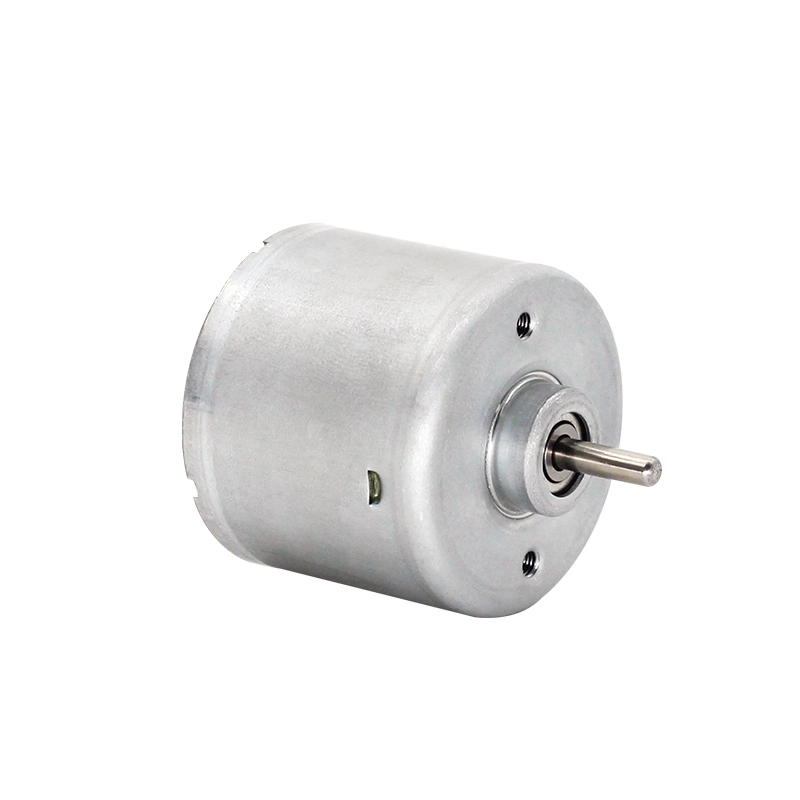Exploring Efficiency: Power Consumption Characteristics of the 36mm Brushless DC Motor
2024-04-15
In the realm of electromechanical systems, efficiency is paramount. Understanding the power consumption characteristics of motors is essential for optimizing performance, minimizing energy waste, and ensuring reliable operation. In this blog, we delve into the typical power consumption characteristics of the 36mm Brushless DC (BLDC) motor during operation, shedding light on its efficiency and energy-saving potential.
The Basics of Brushless DC Motors:
Before delving into power consumption, let's briefly review the fundamentals of Brushless DC motors. Unlike traditional brushed motors, BLDC motors feature an electronically commutated design, offering numerous advantages such as higher efficiency, lower maintenance requirements, and smoother operation. The 36mm BLDC motor, with its compact form factor and robust performance, finds applications across diverse industries, from robotics and automotive systems to HVAC and consumer electronics.
Factors Influencing Power Consumption:
1. Load Characteristics: The power consumption of a BLDC motor varies depending on the load it is driving. Lighter loads require less power to maintain speed and torque, whereas heavier loads demand higher power inputs to overcome resistance and inertia. By matching the motor's output to the application's load requirements, engineers can optimize efficiency and minimize unnecessary energy consumption.
2. Speed and Torque Requirements: The power consumption of a BLDC motor is directly proportional to the speed and torque demanded by the application. Higher speeds and torque levels necessitate increased power input to meet performance goals. By selecting the appropriate motor size and configuration, engineers can ensure that power consumption aligns with the application's speed and torque requirements, avoiding over-sizing or under-sizing issues.
3. Efficiency of Motor Design: BLDC motors are inherently more efficient than their brushed counterparts due to their improved electrical and mechanical design. With reduced friction, lower resistance losses, and optimized magnetic flux distribution, BLDC motors can convert electrical energy into mechanical power with higher efficiency. This translates to lower power consumption and reduced operating costs over the motor's lifespan.
Power Consumption Profiles:
1. Startup and Acceleration: During startup and acceleration phases, BLDC motors typically experience higher power consumption as they overcome inertia and bring the load up to speed. However, modern control algorithms and motor designs incorporate soft-start features and ramp-up profiles to minimize inrush currents and optimize energy efficiency during these transient phases.
2. Steady-State Operation: Once the motor reaches its desired speed and torque levels, power consumption stabilizes to a steady-state value determined by the application's operating conditions. BLDC motors exhibit excellent efficiency in steady-state operation, converting electrical energy into mechanical power with minimal losses.
3. Dynamic Load Changes: In applications with dynamic load profiles or variable operating conditions, the power consumption of BLDC motors may fluctuate to accommodate changes in speed, torque, or direction of rotation. Advanced control algorithms and feedback mechanisms help optimize power consumption in real-time, ensuring optimal performance and energy efficiency under varying load conditions.
Maximizing Efficiency and Performance:
To maximize the efficiency and performance of the 36mm Brushless DC motor, engineers can employ several strategies:
- Efficient Control Algorithms: Implementing advanced control algorithms, such as Field-Oriented Control (FOC) or Sensorless Control, helps optimize motor efficiency and responsiveness under different operating conditions.
- Variable Speed Drives: Utilizing variable speed drives and frequency converters allows for precise control over motor speed and torque, enabling energy-efficient operation across a wide range of speeds and loads.
- Motor Sizing and Selection: Choosing the right motor size and configuration based on the application's requirements helps minimize energy waste and ensures optimal performance without overburdening the motor.
Conclusion:
The 36mm Brushless DC motor offers impressive power consumption characteristics, combining efficiency, reliability, and performance to meet the diverse needs of modern applications. By understanding the factors influencing power consumption and implementing strategies to optimize efficiency, engineers can unleash the full potential of BLDC technology, driving innovation and sustainability across industries. As technology continues to evolve, advancements in motor design and control will further enhance efficiency and energy-saving capabilities, paving the way for a greener and more efficient future.



